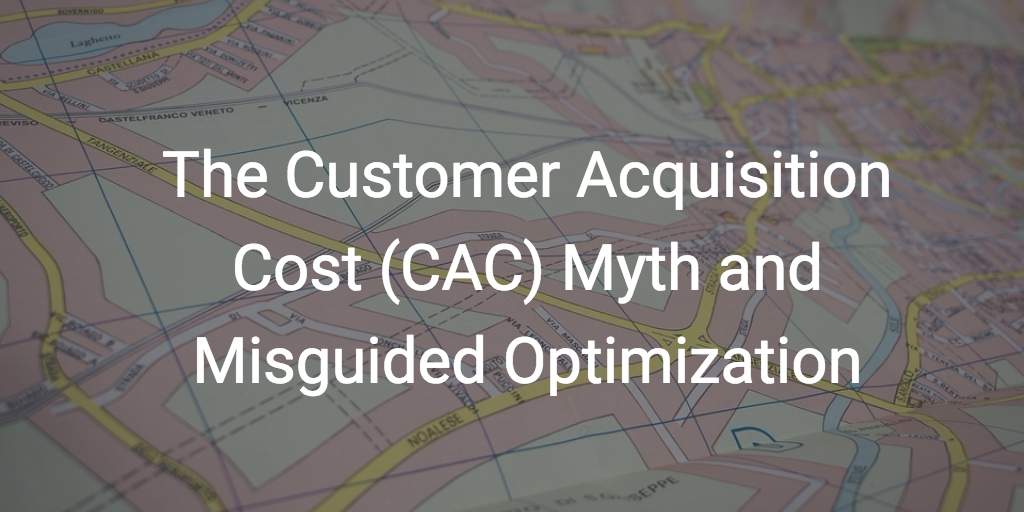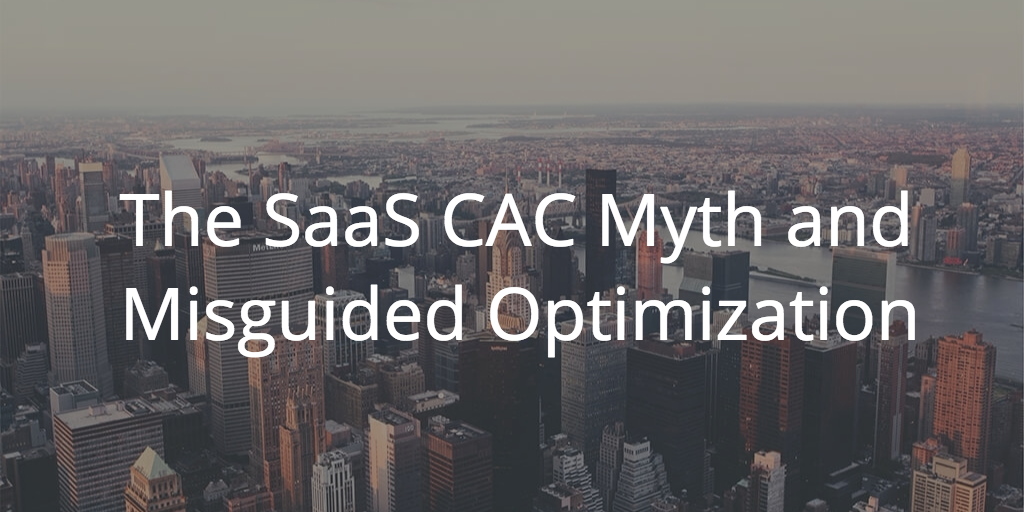
And for most companies and their CFOs and COOs, it’s all about making that number as low as possible.
But in my experience, it’s not just about lowering CAC so you pay less to get a customer.
No… to me it’s about CAC Efficiency… let me explain.
Fully-Loaded CAC Defined
When I talk about CAC, I’m talking about “fully-loaded” CAC.
Fully-loaded – in this case – means CAC includes everything it took to get that customer – the cost of advertising, marketing, sales, support during the Free Trial, on-boarding costs, etc. – and even includes the costs associated with attracting prospects (and non-prospects) that didn’t convert to a paying customer.
So, if you have to get 1,000 people to your site and 100 into your Free Trial to get one new customer:
- Email me because that’s awful so I can help you fix that and
- Your CAC includes the cost of sales and support for those 100 you tried to convert in the trial, and marketing / advertising that you spent to get the 1,000 to your site in the first place.
That’s why people are often shocked at the *actual* CAC when they calculate it correctly… it’s not just the $7 you paid AdWords for the click.
Introducing CAC Efficiency
Now, I’m not trying to introduce a new business metric here as much as a concept; a way of thinking about stuff.
Sure, some companies are starting to measure CAC Efficiency as a metric, which is cool, but that’s not the goal of this post.
I just want to get you thinking about CAC differently.
And to do that, let’s look at a simple, made-up example.
So let’s assume there are two SaaS CRM companies that each pay $1000 in fully-loaded CAC and each company’s most popular plan is $100/mo (or ACV of $1,200).
But the first company optimizes for CAC efficiency and gets paying customers faster, has profitable customers sooner, and has a higher customer lifetime value (LTV).
For Company One, this results in cutting their CAC payback period down from 10 months to 6, increases their ACV to $2000 (from $1200), and turns their LTV (based on 3-year estimated customer lifetime) to $6,000 up from $3,600.
For Company Two, they’re just looking for ways to lower their CAC even more. Misguided.
The first company optimized for CAC Efficiency where the second company simply bought into the myth that low CAC is the only thing to focus on.
A New CAC POV
We must get away from thinking that optimizing CAC is just about ‘paying less’ for a customer or reducing the cost of an AdWords click.
By lowering CAC, you instantly reduce the time it takes to recover the cost of acquisition (what we in the game call the CAC Payback Period) and the sooner you pay back CAC, the sooner you have a profitable customer.
Makes sense, right?
But that just happens as a side-effect of “paying less for a customer” … it gets better when you work to eliminate waste and slack in your customer acquisition system.
When you reduce the length of the overall sales cycle, increase the average Annual Contract Value (ACV) at conversion, and improve the 90-days post-conversion retention rate, you get a much more efficient – and profitable – customer acquisition process.
Yes… a longer sales cycle sometimes adds to the typical CAC calculation; but not always. Sometimes the costs are the same, but if we can shorten it, the *efficiency* of the CAC drastically improves.
And expansion-stage companies that focus on the efficiency behind their CAC and not just on “paying less for a customer” are the ones that win. Simple.
Oh, and I won’t even go into the fact that if you can shorten your pay pack period and increase ACV, you could actually increase the amount you can spend for a customer and grow faster than your competitors, outbid them on AdWords, outspend them in other channels, steal their top sales people, etc.
9 CAC Efficiency Cranks
When a company engages me to help improve CAC Efficiency (most engage me just to help them grow; CAC Efficiency isn’t what most people are looking for… yet), these are some of the things we work on:
- Improve the Effectiveness of Existing Sales & Marketing Efforts / Spend
- Quickly Engage Prospects and New Customers
- Reduce Friction and Improve Onboarding Process
- Improve Engagement and drive Prospect Investment
- Make Engagement a Measurable and Optimizable Metric
- Increase the Number of Conversions from Free to Paid
- Reduce the time from first interaction to paid conversion
- Increase Average Selling Price / Annual Contract Value on Conversions
- Improve First 90-Day Engagement and Reduce Cancellations
Those are some of the high-level cranks and levers that I use to scale my clients’ customer acquisition machine… you should use these, too.
Examples of Improved CAC Efficiency
I’ve achieved levels of CAC efficiency that I’m almost afraid to say because most people will assume it’s unrealistic or that I’m lying. But I’m going to tell you because I’m super-proud of the work I’ve done and if you don’t believe these results are possible… that’s your problem, not mine.
Okay, so here are some dramatic examples I’ve had with B2B vendors, all achieved without any changes in traffic generation, sales process, or marketing spend:
- 240% Increase in Free-to-Paid Conversions in 30 days
- 400% Increase in Free-to-Paid Conversions in 30 days
- 600% Increase in Free Trial sign-ups in a couple days w/ better 90-day retention on the back end
- Reduced time from Free Trial sign-up to Paid Customer from 41-days on a 30-day Free Trial to 9 days… and recently down to 3 days!
Can we do the same for you? I don’t know… maybe.
